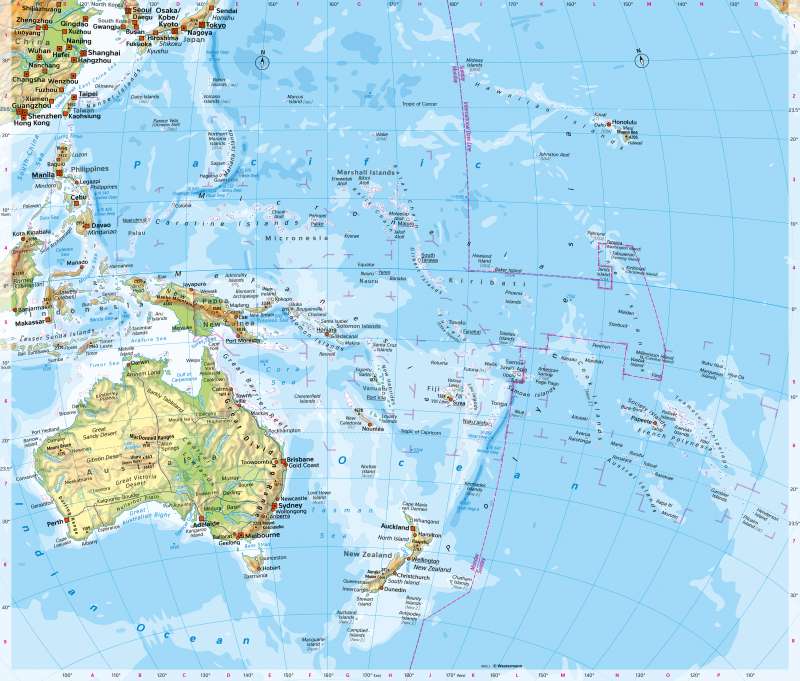Australia/Oceania - Physical map
Topographic orientation
978-3-14-100890-6 | Page 160 | Ill. 1

Overview
The Pacific Ocean covers an area of 166 million square kilometres, or 181 million square kilometres with its tributaries. By comparison, Europe's land area is a good 10 million square kilometres. Large parts of the Pacific Ocean are over 4000 metres deep, and in the long deep-sea trenches up to 11 034 metres are reached (Mariana Trench). Such trenches mark plate boundaries where tectonic activities such as the shifting, collision or subduction of earth plates repeatedly cause volcanism or earthquakes and seaquakes.
Landmasses and islands in the Pacific Ocean
With 7.7 million square kilometres of land area, Australia is the smallest continent on earth. Geologically, Australia is old and very stable. There is no tectonic activity comparable to that of Southeast Asia or Oceania. Large parts are occupied by arid areas, which, however, have a different character than in North Africa, for example (lower aridity). The natural flora and fauna consist of many endemic species due to the isolated location over geological time.
Oceania has a continental area of 1.3 million square kilometres. The mostly small islands are scattered over a sea area of 70 million square kilometres. The Pacific's island’s wealth is unique compared to other oceans. New Zealand and New Guinea are geologically young, relatively large, and partly mountainous islands that lie on plate boundaries. The tectonic processes and the risk of earthquakes are correspondingly intense. The numerous small islands are mostly atolls or volcanic islands. Only about a third of these islands are inhabited.
The International Date Line and its course were internationally agreed on in 1845. If you cross it on a Monday coming from the west (for example, on a journey from Asia to America), the following day is also another Monday, you (apparently) gain a day, because east of the International Date Line it is only Sunday. The time does not change, or only by one hour, depending on the time zone border. Conversely, if you travel from America to Asia on a Sunday, you seem to lose a day, because west of the International Date Line it is already Monday.




